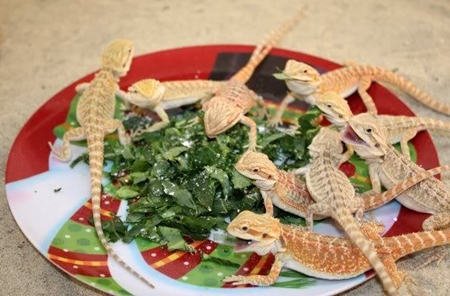Bearded Dragon Feeding Schedule Chart: A Beginner's Guide to Keeping Your Pet Healthy
Introduction
Bearded dragons are one of the most popular reptile pets, and for good reason! These gentle giants are easy to care for, have fun personalities, and can make great additions to any family. However, like any pet, they require proper care and nutrition to thrive. One of the most important aspects of caring for a bearded dragon is their feeding schedule. In this post, we’ll cover everything you need to know about creating a bearded dragon feeding schedule chart for your pet, including what to feed them and when.
Understanding Your Bearded Dragon’s Diet
Before we dive into the specifics of a feeding schedule, it’s important to understand what your bearded dragon should be eating. Bearded dragons are omnivores, which means they eat both insects and vegetation. The ratio of insects to vegetation in their diet changes as they age, but as a general rule, juveniles should eat more insects while adults should eat more vegetation.

When it comes to insects, you should feed your bearded dragon a variety of different types. Some insects that are safe for your pet to eat include crickets, mealworms, and roaches. They should also be dusted with a calcium and vitamin supplement to ensure that your pet gets all the nutrients they need.

When it comes to vegetation, it’s important to offer a variety of different options. Some vegetables that are safe for your bearded dragon to eat include collard greens, mustard greens, and squash. You should also offer a variety of fruits as an occasional treat, such as blueberries and strawberries.
Creating a Feeding Schedule Chart
Now that you understand what your bearded dragon should be eating, it’s time to create a feeding schedule chart. This chart will help you keep track of what your pet is eating and ensure that they are getting a balanced diet.
The feeding schedule will vary depending on your bearded dragon’s age, so be sure to adjust it accordingly. As a general rule, juveniles should be fed more frequently than adults. Here’s an example of a feeding chart for a juvenile bearded dragon:

As you can see, a juvenile bearded dragon should be fed a variety of different insects and vegetables throughout the day. It’s important to offer a variety of different options to ensure that your pet gets all the nutrients they need.
For adult bearded dragons, the feeding schedule will be slightly different. Here’s an example of a feeding chart for an adult bearded dragon:

As you can see, an adult bearded dragon should be fed less frequently than a juvenile. You should also offer more vegetation and less insects, as their diet will shift as they age.
Final Thoughts
Creating a bearded dragon feeding schedule chart can seem overwhelming at first, but it’s an important aspect of caring for your pet. By providing them with a balanced diet, you can ensure that they live a long and healthy life. If you have any questions about your bearded dragon’s diet or feeding schedule, don’t hesitate to reach out to your veterinarian or a reptile specialist for guidance.
